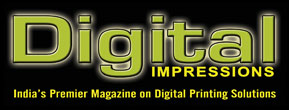In the fast-paced realm of retail,
where digital innovations continue
to reshape the landscape, the role
of packaging has evolved into a
dynamic interface between brands
and consumers. Digital printing
technology has emerged as a
transformative force, allowing
brands to enhance visual appeal,
convey clear messaging, and
experiment with innovative
designs. In this article, we explore
how the advent of digital printing
has influenced the elements that
attract consumers to pick up a
product from the shelf.
Packaging is more than just a container for a product; it’s
a critical touchpoint in the consumer journey. Digital printing
enhances this experience in several ways.
Consumers today seek unique and personalized products.
Digital printing allows brands to create customized packaging
that caters to individual preferences. This includes the ability to
incorporate variable data printing, allowing for customized
messages, promotions, or even individualized packaging for
specific market segments. This dynamic approach to brand
messaging resonates with consumers, offering a tailored
experience that engages and entices them to explore the
product further. This capability has proven particularly beneficial
in promotional campaigns and limited edition releases.
Digital printing facilitates the integration of functional and
sustainable features into packaging design. Brands can
easily experiment with various materials, textures, and
finishes, ensuring that the packaging is not only visually
appealing but also aligns with sustainable practices. This
flexibility in material choices and the ability to optimize
designs for recyclability contribute to the overall appeal of
the product on the shelf.
High-quality, vibrant images and intricate designs are
achievable with digital printing. This visual appeal can
significantly impact a consumer’s purchasing decision. A
well-printed package can catch a consumer’s eye on a
crowded shelf, making the product more attractive compared
to competitors. The shelf appeal is crucial, as it directly
influences consumer behavior and can drive impulse
purchases. Brands can experiment with different design
elements, colors, and finishes to create packaging that
stands out and attracts attention.
Digital printing techniques, such as embossing and
varnishes, allow brands to incorporate interactive tactility into
their packaging. From raised logos to textured patterns,
these digital enhancements create a multisensory experience
that encourages consumers to physically engage with the
product, leaving a lasting impression.
The integration of digital printing with technologies such as
QR codes and augmented reality (AR) can create interactive
packaging experiences. Consumers can scan a QR code to
access product information, tutorials, or promotional content.
AR can bring packaging to life, providing an immersive
experience that engages consumers on a deeper level.
Digital printing facilitates the creation of immersive
storytelling experiences through advanced imagery. Brands
can utilize high-resolution printing to tell compelling stories
about their heritage, values, or the product’s journey. The
detailed imagery produced by digital printing adds depth
and authenticity, transforming the packaging into a canvas
for storytelling that captivates consumers and encourages
them to connect with the brand on a personal level.
The digital printing revolution in retail packaging continues
to evolve, driven by innovative technologies and changing
consumer preferences. Some notable trends include:
Variable Data Printing: VDP allows for the customization of
individual pieces within a single print run. Brands can change
text, images, and graphics on each package, enabling
personalized marketing campaigns. For example, Coca-
Cola’s “Share a Coke” campaign, which featured individual
names on bottles, is a classic example of VDP in action.
Smart Packaging: Combining digital printing with smart
technologies like RFID tags and NFC chips is transforming
packaging into a source of real-time data and consumer
interaction. Smart packaging can provide insights into
product usage, enhance supply chain transparency, and
improve inventory management.
Eco-Friendly Materials: The shift towards sustainability is
influencing the choice of materials in digital printing. Brands
are opting for recyclable, biodegradable, and compostable
substrates that align with their environmental commitments.
Digital printing supports this trend by offering versatility in
material selection.
3D Printing: While still in its nascent stages for mass
production, 3D printing holds potential for creating unique
and customized packaging solutions. It allows for complex
geometries and structures that traditional methods cannot
achieve, opening up new possibilities for innovative
packaging designs.
Traditional printing processes can be time-consuming due to
the need for creating and setting up printing plates. Digital
printing, on the other hand, eliminates these steps, enabling
faster turnaround times. This speed is crucial for brands looking
to quickly adapt to market trends and consumer demands.
For small to medium print runs, digital printing is often
more cost-effective than traditional methods. It reduces the
need for large minimum order quantities, making it
accessible for smaller brands and startups.
While digital printing excels in small to medium print runs,
scaling up for large volumes can be less cost-effective
compared to traditional printing methods. Brands need to
carefully assess their production needs and choose the
appropriate printing technology accordingly.
As digital printing becomes more prevalent, there is a risk
of oversaturation. Brands must ensure that their packaging
remains authentic and meaningful, rather than just a
gimmick. Balancing creativity with brand integrity is key to
maintaining consumer trust.
The digital printing revolution in retail packaging is more than
a technological shift; it’s a paradigm change that impacts how
brands connect with consumers. By offering unprecedented
levels of customization, speed, and sustainability, digital printing
is helping brands create packaging that not only protects
products but also tells a compelling story. As this revolution
continues to unfold, the retail packaging landscape will become
increasingly dynamic, innovative, and consumer-centric. The
key for brands will be to embrace these advancements while
staying true to their core values and delivering genuine value to
their customers.
|

